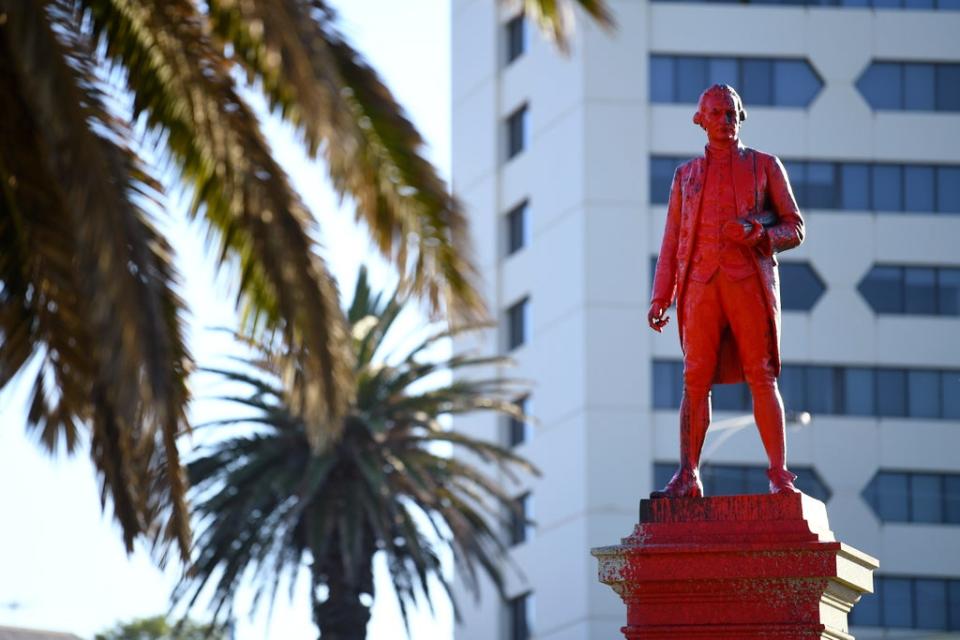Celebrations and protests mark polarizing Australia Day

Australians celebrated and protested the anniversary of British colonization of their country Wednesday on a day that is officially known as Australia Day but is considered by Indigenous activists Invasion Day.
Argument rages over how history should remember a fleet of 11 British ships carrying a human cargo of convicts arriving at Port Jackson in present-day Sydney on Jan. 26, 1788.
Protesters highlight that a penal colony was built on land taken from Indigenous inhabitants without the negotiation of a treaty. The lack of any treaty with Indigenous populations puts Australia out of step with comparable countries including the United States, Canada and New Zealand.
A statue in the city of Melbourne of British naval officer James Cook who in 1770 charted Sydney’s coast, was defaced early Wednesday with red paint. Posters said: “Abolish Australia Day.”
The government noted the day was marked by more than 16,000 immigrants from 150 nations becoming Australian citizens in more than 400 ceremonies across Australia. Some ceremonies were smaller than usual and conducted online because of the rapid spread of the coronavirus in Australia’s most populous states.
Prime Minister Scott Morrison lead a ceremony in the national capital Canberra and gave special thanks to Indigenous elder Aunty Violet who welcomed the gathering to her traditional land.
“On this, our national day, we begin by honoring the traditional custodians on the land on which we are gathered here today — the Ngunnawal people — and those who have traveled here, met here, and felt at home and been welcomed on this country for thousands of years,” Morrison said.
“Today there are thousands of gatherings across our country, each reflecting in a different way and celebrating our love of Australia,” Morrison added.
Morrison was instrumental in changing a lyric of the national anthem, “Advance Australia Fair,” last year in response to complaints that Indigenous Australians, who account for 3% of the population, were excluded from its message.
Australians went from “young and free” to “one and free,” acknowledging that the land had been inhabited for tens of thousands of years before Europeans arrived.
The Indigenous perspective is gaining traction in a debate that has simmered for decades over whether Australia’s national day should be shifted from Jan. 26 — a date many Indigenous people mark with mourning ceremonies.
In Canberra, activists marked 50 years since four Indigenous men gathered around a beach umbrella which they called an Aboriginal Embassy pitched on the lawns of what was then Parliament House.
Indigenous activists now inhabit a permanent collection of shelters known as the Aboriginal Tent Embassy on the same grounds. But the original Parliament House they once challenged is now a museum. The lawmakers moved away in 1988 to the current Parliament House.
The 1972 Aboriginal Embassy was a protest against the then government’s refusal to consider returning land to traditional owners.
Three years later, a different government struck a deal with a British cattle company to return to the Gurindji people a lease over their traditional land. It was a major win in the Indigenous land rights movement.

 Yahoo News
Yahoo News 